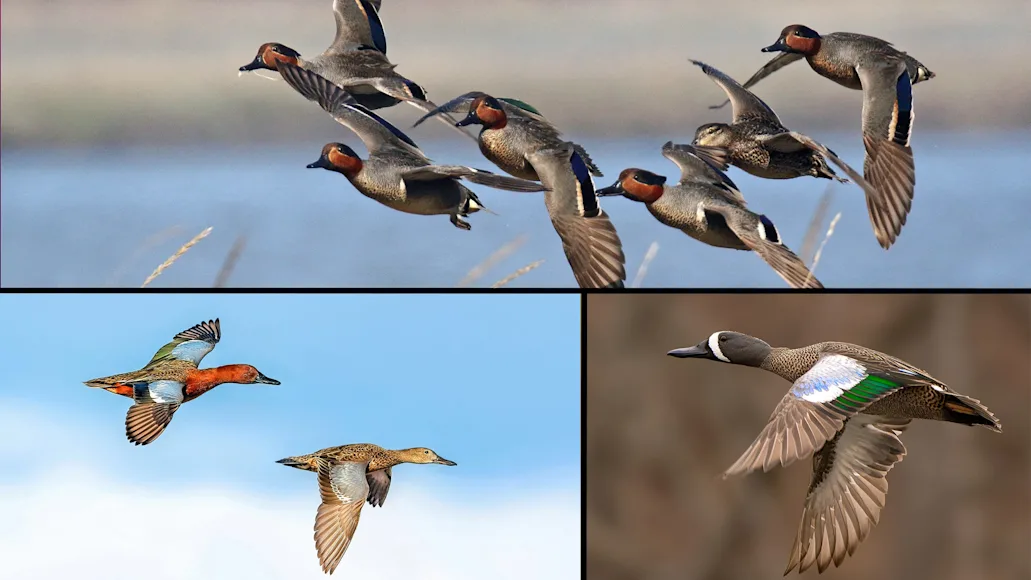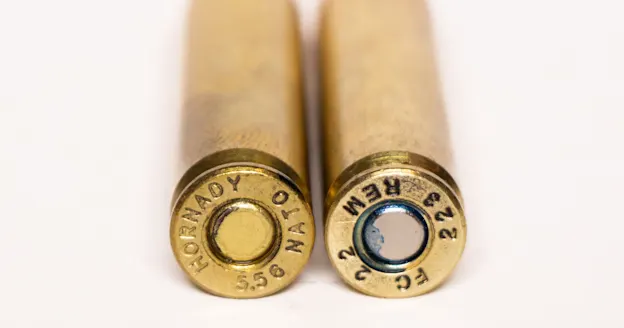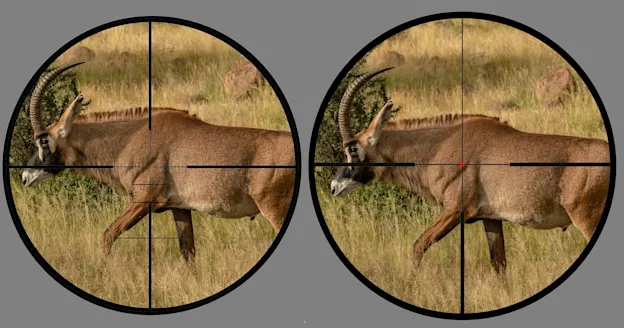Among the smallest and most widespread puddle ducks, teal are found all over the world. They are surface and shallow-water feeders that prefer small marshes and ponds, sheet-water, and any other environment where they can skim and dabble for invertebrates and seeds. North America is home to three teal ducks, all of which are important to waterfowl hunters, as well as to birdwatchers and anyone who enjoys wildlife.
Hunters know teal as birds that are often easy to decoy, but speedy and difficult to shoot. Teal are prized by many as tablefare, and a bonus early teal season in many states gives hunters added opportunity to target one of our sportiest duck species. As a group, teal ducks are identifiable by their small size and for the tight formations in which they fly. Indvidually, each species has distinctive markings that also give the birds their names. Bluewing teal have large, baby-blue wing patches; greenwing teal’s wings have an iridescent green patch; cinnamon teal also have blue wing-patches, but the drake is dressed in gorgeous reddish feathers from head to tail.
Learning the habits and life history of teal ducks can help you find them and understand more about them, whether your goal is to see them in the wild, hunt them, or both.
Bluewing Teal
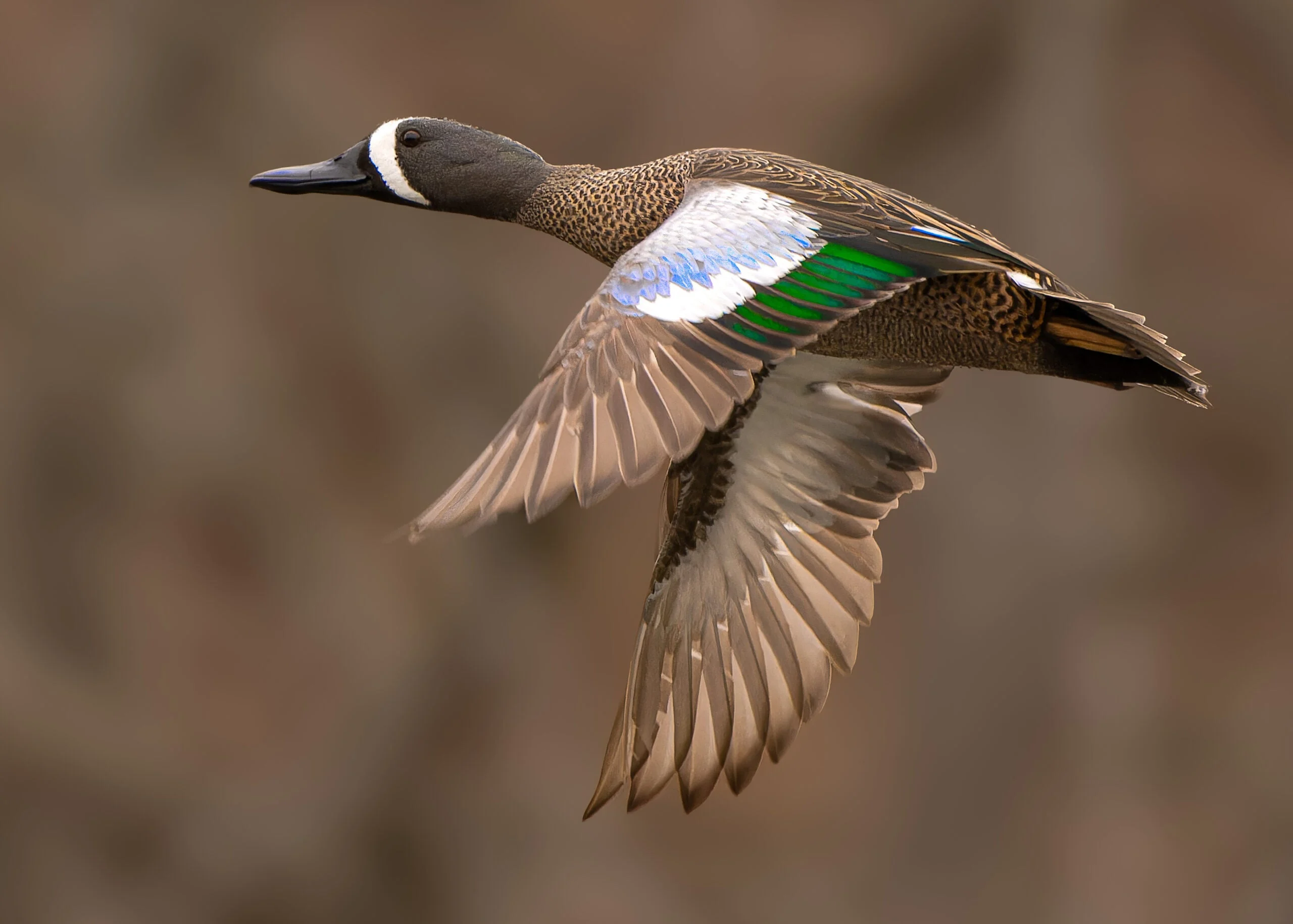
Bluewing drakes have powerd-blue wing patches and a white half-moon patch on their heads. MNPerspective / Adobe Stock
Appearance, Range, and Habitat
Named for the large, powder-blue patches on their wings, bluewing teal are also distinguished by the white half-moon patch on the head of the drakes. They are small ducks, weighing under a pound and measuring about 16 inches long. Breeding across much of Canada and the United States, including Alaska, the bluewing teal is common everywhere but parts of the Pacific flyway. Their migration takes them as far south as Central America and even Brazil. These teal ducks prefer shallow ponds wetlands, and are largely birds of fresh water, although they will use brackish coastal marshes and lagoons.
Feeding Habits
Bluewing teal are surface feeders, preferring to skim rather than tip up like many other dabbling ducks. In fact, the bluewing’s bill bears a family resemblance to the bill of its cousin, the shoveler, and it feeds the same way, on plants and insects on or just below the water’s surface. Bluewings are omnivorous, although they switch to a primarily plant diet in winter.
Breeding, Nesting, and Migrating Habits
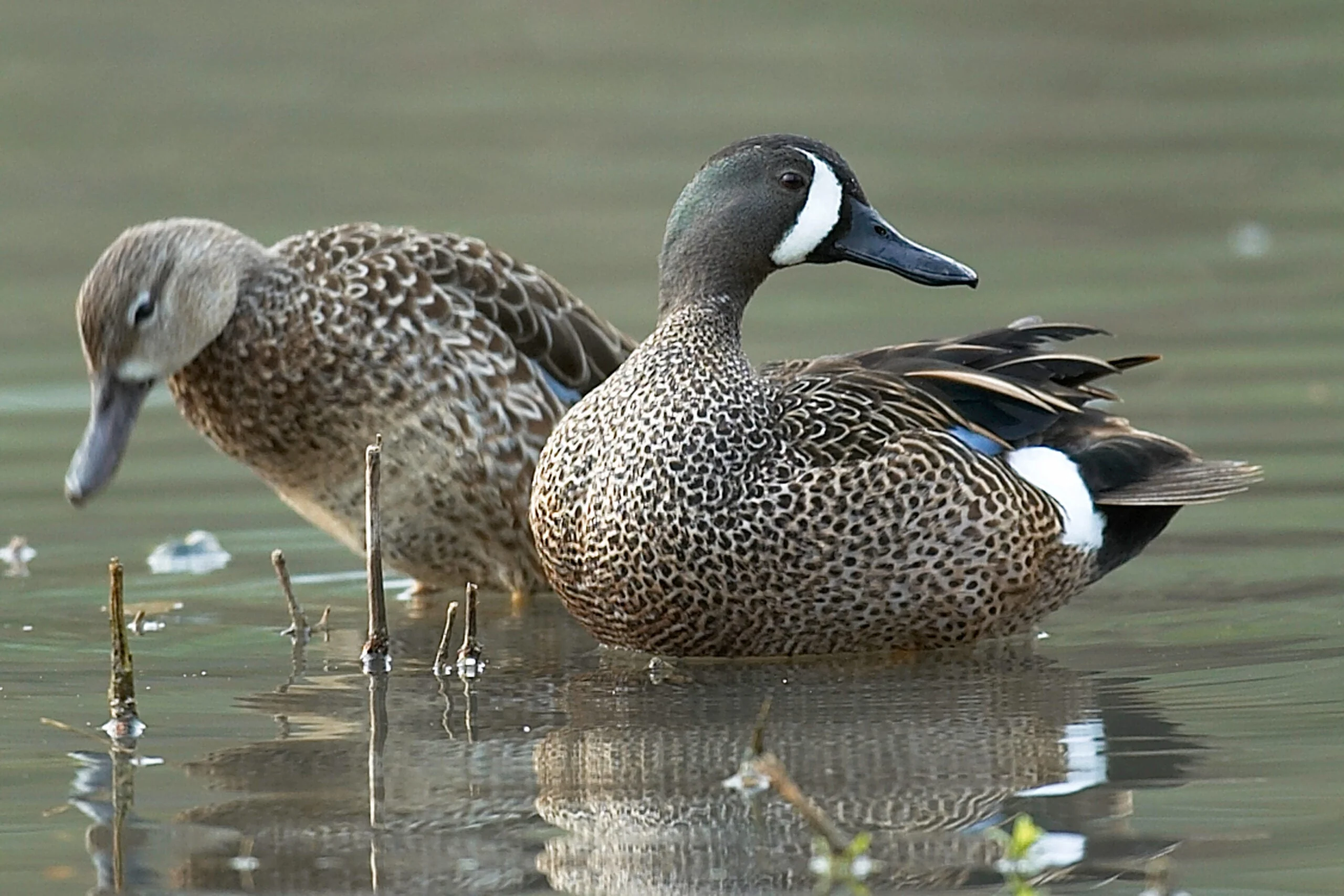
The bluewing hen (left) has blue wing patches but lacks the white crescent on the head of the drake. stuckreed / Adobe Stock
Bluewing teal nest in grass near water. While they breed in much of the US and Canada, the shallow wetlands of the prairie pothole region of the upper Midwest and the Canadian prairie are especially important breeding grounds. Male bluewings display by dipping their heads in the water and bobbing them up and down. Females show interest by pointing their bill at the male and raising and lowering their heads. Females typically chose one from among many courting males. Teal pair just long enough to breed, then choose new mates the following spring.
Females may spend several days looking for the right nesting spot before digging a bowl in the ground and lining it with grass and down. She will lay a clutch of 6 to 14 eggs, and the chicks are ready to leave shortly after they hatch.
Bluewing teal like warm weather. They are the first ducks to migrate in the fall and the last to fly north in the spring. They are long-range migrants, too. Bluewings will begin traveling south in August. While some will winter in the extreme southern United States, most will keep going to Cuba, Central America, and even Brazil and Venezuela.
Greenwing Teal
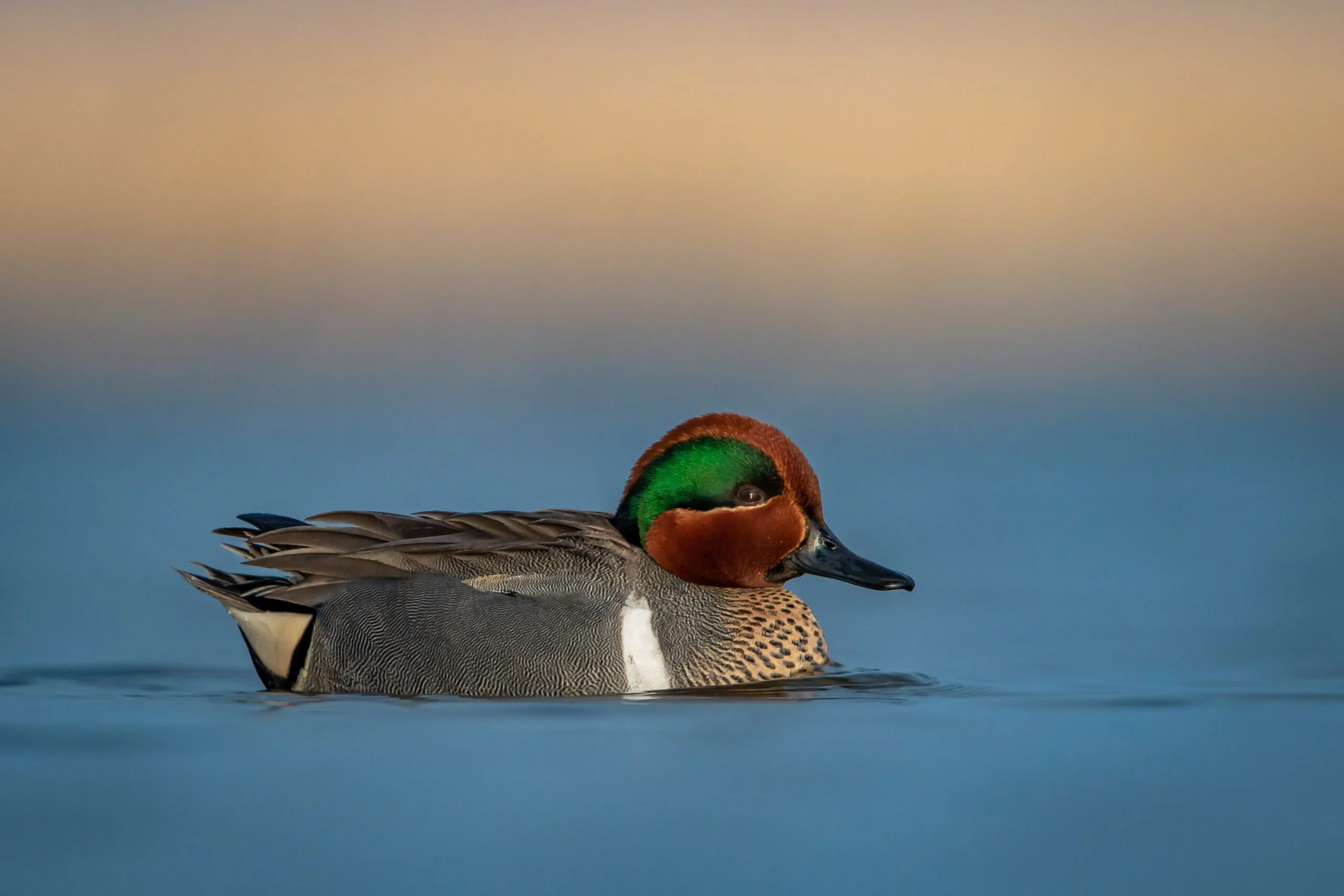
A gorgeous greenwing drake. These teal are North America’s smallest puddle ducks. TimBardy / Adobe Stock
Appearance, Range, and Habitat
Our smallest puddle duck, the greenwing teal weighs under a pound and is identifiable by green wing-patches. Drakes have handsome red-and green-marked heads. Despite their similarity in name and size, and the fact that sometimes they travel together, greenwing teal and bluewing teal are not closely related. You can see the difference in the bills of the two birds: the bluewing’s bill is broad, like that of its cousin, the shoveler, while the greenwing has a slimmer, more mallard-like bill. The drake greenwing makes a distinctive peep sound.
Greenwinged teal ducks are widespread, populous, and found in all four flyways. They breed in much of the northern U.S. and throughout Canada and Alaska, and they winter throughout the southern US and Mexico. A separate, slightly larger race of greenwing teal, the Aleutian teal, breeds and lives year-round in the Aleutian chain.
Greenwing teal are mostly found in smaller ponds and marshes as well as in temporary sheet-water and some man-made bodies of water, such as agricultural fields.
Feeding Habits
These teal ducks eat seeds and invertebrates, skimming, dipping, and tipping to reach their food. They switch to a primarily seed diet in the cold weather and will also feed in flooded rice fields. Young teal feed on insect larva.
Breeding, Nesting, and Migrating Habits
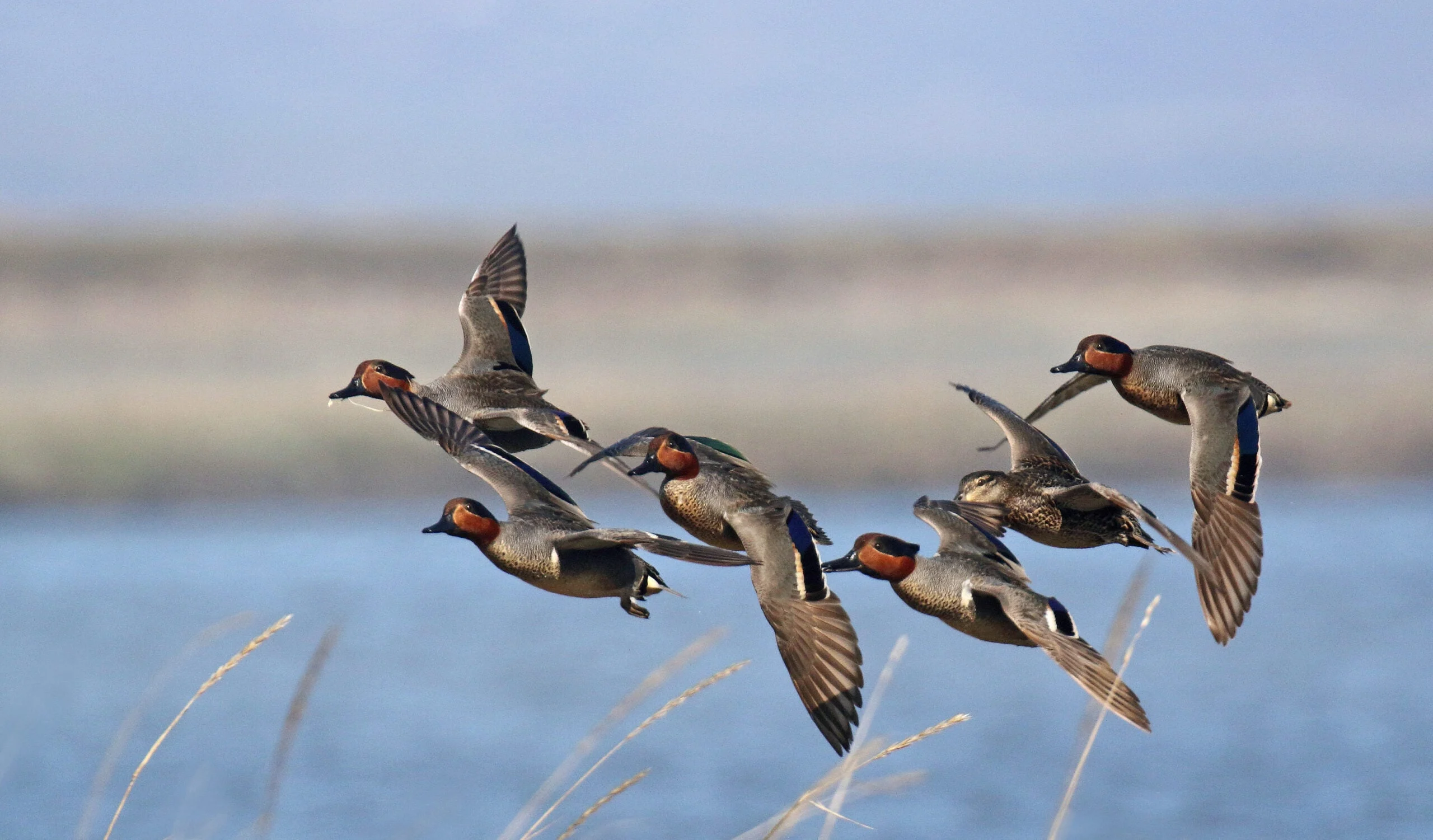
Greenwings tend to fly low, fast, and in tight formations, making for difficult targets. AGAMI / Adobe Stock
Greenwing teal ducks nest in a wide variety of habitats. Many do nest in grasses surrounding shallow wetlands in the prairie pothole region, but they can also nest in wooded areas around beaver ponds and streams. Prior to nesting, greenwing teal form pair bonds on the wintering grounds, with flocks of up to 25 drakes flying and displaying to attract females.
While some greenwing teal join early flocks of migrating bluewinged teal ducks, the majority of greenwings migrate later on in the fall and come north ahead of the warm-weather-loving bluewings in the spring as well. Hardy ducks, greenwings don’t travel as far south as bluewings, either. Many will winter in the southern U.S. and Mexico, as well as in Cuba, Haiti, and the Dominican Republic.
Cinnamon Teal
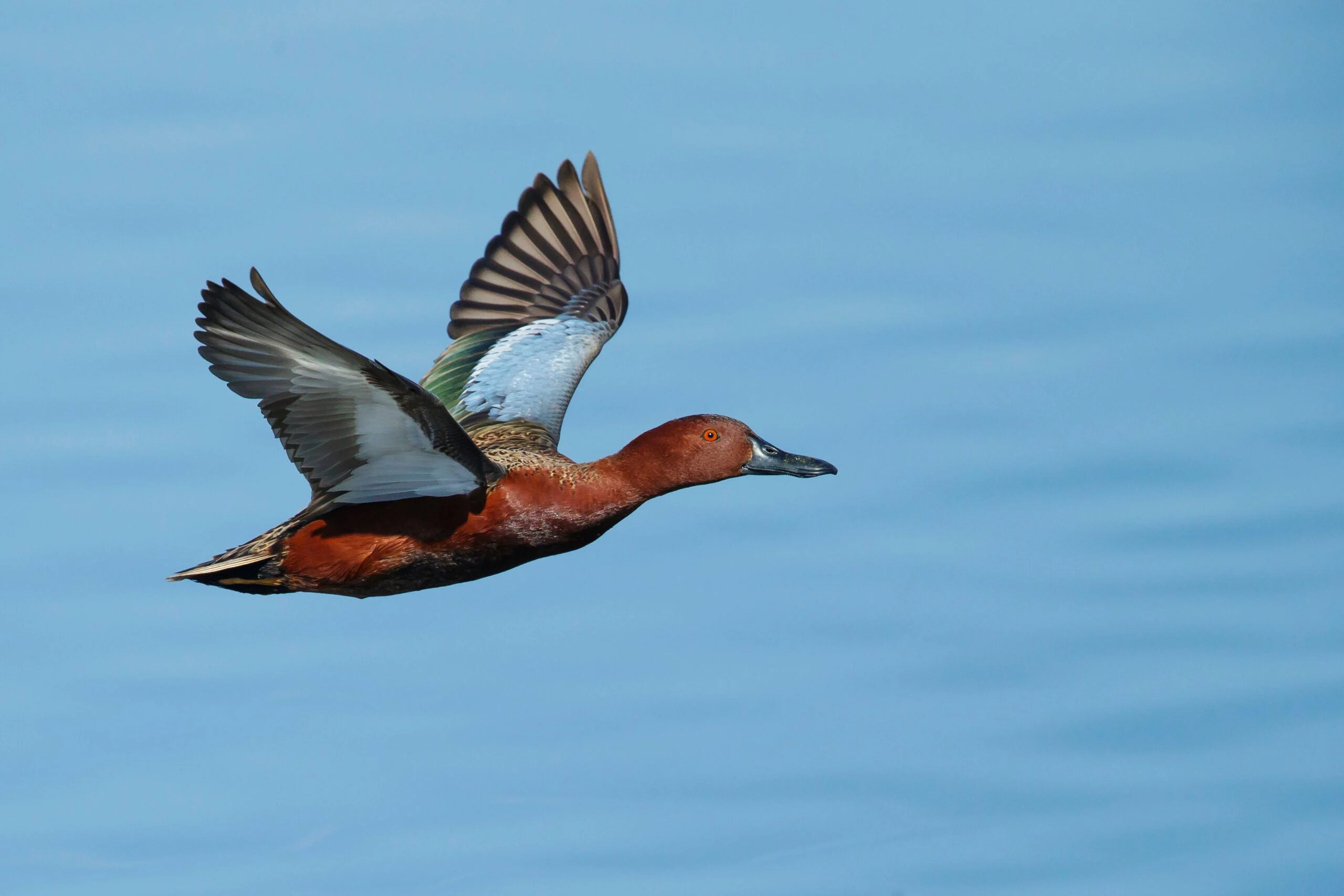
A drake cinnamon teal, flying low over a California lake. AGAMI / Adobe Stock
With their full-body coat of red feathers, Cinnamon teal drakes are an unmistakable sight in the western third of the United States and throughout Mexico where they live. Other subspecies of cinnamon teal live in South America, making it the only duck common to both north and south America.
Appearance, Range and Habitat
Weighing just under a pound at most, cinnamon teal ducks are about the same size as bluewing teal. They share a powder-blue patch on each wing as well, and black bills. The bills are slightly longer and broader than that of the bluewing. Female, immature, and non-breeding males all wear a drab, brownish coat of feathers. Unlike bluewing and greenwing teal ducks, which nest throughout Canada, cinnamon teal do not breed much north of the U.S./Canada border. Their preferred habitat consists of large, permanent wetlands with a lot of emergent vegetation. However, they can adapt to a variety of wetland types and flooded agricultural fields. Cinnamon teal are found throughout the western United States and almost all of Mexico.
Feeding Habits
Cinnamon teal feed on seeds and small invertebrates, just like so many other dabbling ducks. They prefer to skim for their meal, and they will often feed together in a tight bunch, which may help them stir up food.
Breeding, Nesting, and Migrating Habits
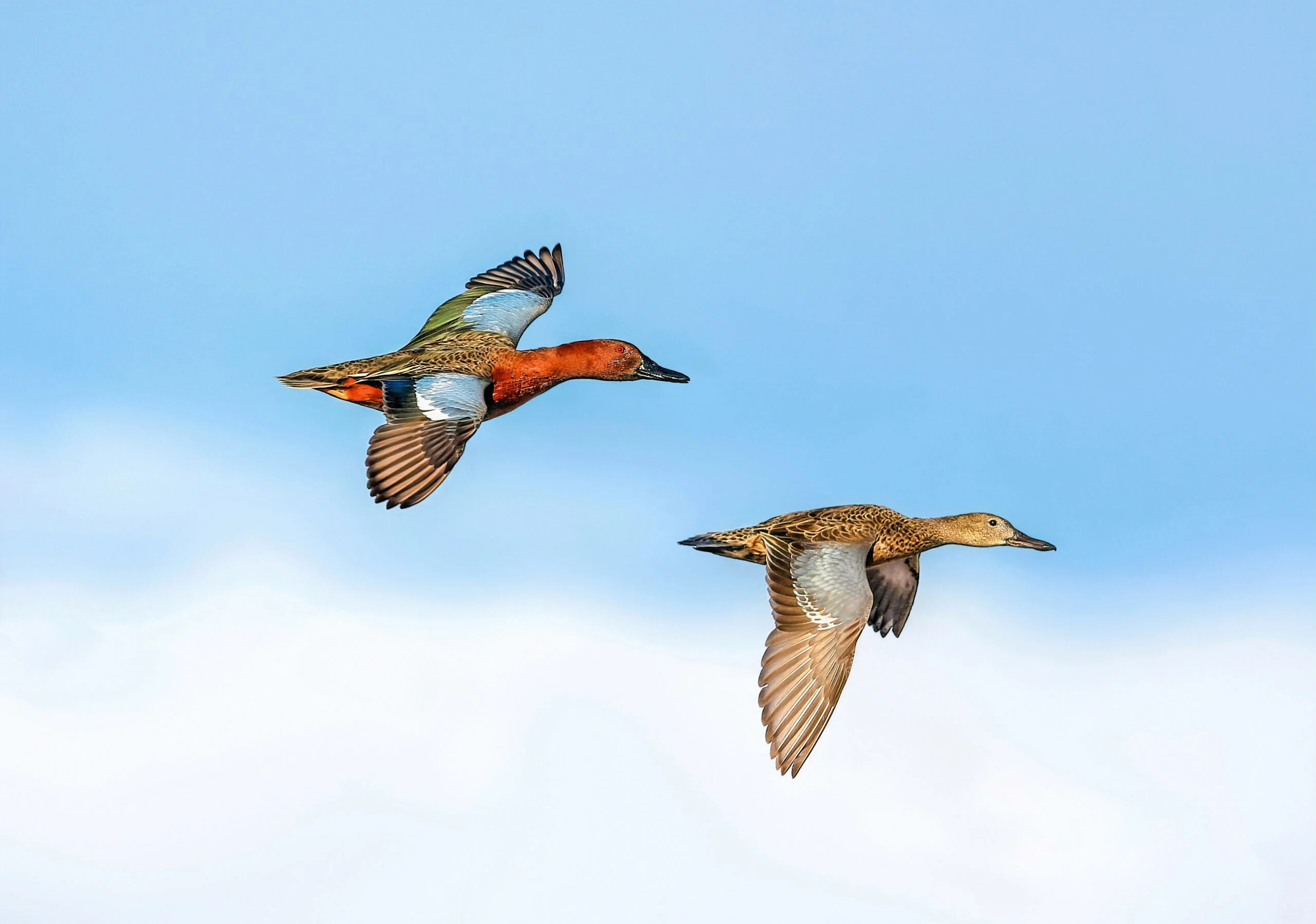
The hen cinnamon teal (right) has a blue wing patch, but is otherwise drab-colored compared the drake. Susan Hodgson / Adobe Stock
Late winter and early spring is courting time for cinnamon teal ducks. Males fly together in courtship flights and preen and display for the females. The hen indicate interest by swimming in front of a male, whereas pumping her head or opening her bill are signs of rejection. Once bonded, the female chooses a nest site in grass near water. The hen builds elaborately concealed nests under mats of vegetation, which she enters via tunnels in the grass. Males defend the female and the nest through most of the incubation period. After breeding, cinnamon teal ducks gather in flocks to molt prior to migration.
Cinnamon teal are short- to mid-range migrants and, like bluewing teal, they begin their fall flight in August and September. While a very few have turned up in South America, most are not long-distance migrators. In the United States, the Great Salt Lake of Utah is an important cinnamon teal stopover and staging area.
Teal Ducks: Conservation and Population Status
Bluewing teal are among our most numerous ducks, and greenwinged teal populations are strong. There is some cause for concern about cinnamon teal, however. Their populations have never been as high as the other two teal, and they are losing habitat due to human activity and pollution. Moreover, the Great Salt Lake, an important migratory stopover for the cinnamon teal duck, is suffering the effects of severe drought. Finally, cinnamon- and bluewing teal compete for the same habitat, with the more aggressive bluewings often prevailing. Ducks Unlimited
is the country’s foremost conservation group for teal and other duck species.
Hunting for Teal Ducks
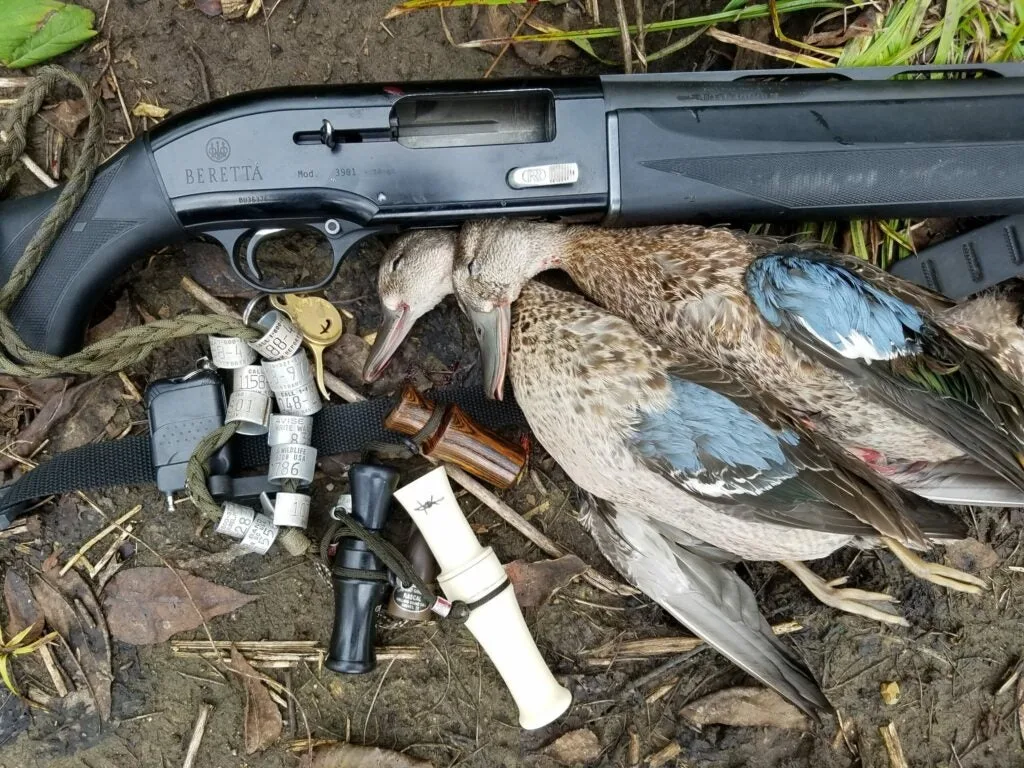
A pair of bluewing hens, taken by the author on an early-season hunt. Phil Bourjaily
Teal ducks, especially bluewing and greenwing teal, make up an important part of most waterfowl hunters’ yearly bags. The birds are prized both as tablefare and as challenging ducks to hit on the wing. The bluewing’s early fall migration takes place before many duck hunting seasons open, so many states enjoy early September teal-only seasons. The vast majority of teal ducks taken in those seasons are bluewings, although a few greenwings will mix in. Most greenwinged teal migrate later, and these hardy little ducks are sometimes still present in the late season.
During the early September teal season, almost any slight cold front or a full moon can trigger a migration day that can make for a memorable hunt. Once they arrive, teal will stay for few days before resuming their journey south. Targeting teal ducks first means finding their preferred habitat. Since teal feed primarily by skimming, this almost always means shallow water, sometimes as shallow as scarcely-covered mudflats. Teal are not the wariest of ducks, and while hiding is always important, it’s not a critical part of a teal hunt. Teal will decoy readily to almost any type of duck decoys, and they are especially attracted to spinning-wing decoys. Although you can buy special teal calls and they are sometimes effective, being in the right place with a decoy spread is the real secret to a good teal hunt.
Teal ducks are early fliers, and many early-season teal hunts take place in a flurry of activity first thing in the morning. A flight can end in 30 or 40 minutes. Later in the fall, greenwing teal will fly early but usually keep moving later into the morning.
Because teal are small ducks and usually shot at close range over decoys, open-choked shotguns and smaller shot like size 4 or 6 steel make the most sense. Unlike big ducks that circle and give you plenty of warning, teal often drop into a decoy spread unexpectedly, so being ready is always important when hunting these tiny, tasty ducks.

